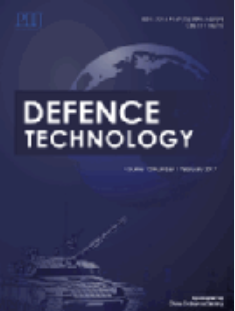复合装药爆震波传播及冲击波超压分布计算方法
IF 5
Q1 ENGINEERING, MULTIDISCIPLINARY
引用次数: 0
摘要
为了探索复合装药的设计准则,揭示爆震波在复合装药中的传播与冲击波总能量分布之间的内在关系,本研究分析了不同结构尺寸和炸药组合的复合装药中爆震波的传播与相互作用过程。本文还研究了产生的冲击波载荷的空间分布特征。基于量纲分析理论,对激波超压在自由空气场中的分布进行了理论分析。利用导出的无量纲函数关系,利用氢码AUTODYN研究了装药结构参数和炸药组合对内超驱动爆轰现象和激波载荷分布的影响。发现复合装药内层的超驱动爆轰现象增加了轴向爆震波的强度,从而增强了折射进入空气后形成的初端波的强度,从而影响了激波超压的分布特征。研究表明,增加复合装药的厚度比和爆速比有利于加剧超驱动爆轰现象,提高一次端波强度和轴向超压。这种增益效应随着冲击波的传播而逐渐减弱。当复合装药内部发生超驱动爆轰时,爆轰压力先升高后降低。展弦比越大的复合装药的马赫反射压力衰减程度越大。此外,随着复合装药展弦比的增大,激波能量逐渐由轴向向径向流动。因此,随着复合装药展弦比的增大,一次端波强度和轴向超压逐渐减小。本文章由计算机程序翻译,如有差异,请以英文原文为准。
The detonation wave propagation and the calculation methods for shock wave overpressure distribution of composite charges
To explore the design criteria for composite charges and reveal the intrinsic relationship between the detonation wave propagation in composite charges and the overall energy distribution of shock waves, this study analyzes the propagation and interaction processes of detonation waves in composite charges with different structural dimensions and explosive combinations. It also investigates the spatial distribution characteristics of the resulting shock wave loads. Based on dimensional analysis theory, a theoretical analysis of the shock wave overpressure distribution in free air fields is conducted. Utilizing the derived dimensionless function relationships, the hydrocode AUTODYN is employed to investigate the effects of charge structure parameters and explosive combinations on the internal overdriven detonation phenomena and the distribution of shock wave loads. It is found that the overdriven detonation phenomenon in the inner layer of composite charges increases the strength of the axial detonation wave, thereby enhancing the intensity of the primary end wave formed upon refraction into the air, which affects the distribution characteristics of the shock wave overpressure. Research has shown that increasing the thickness ratio and detonation velocity ratio of composite charges is beneficial for exacerbating the phenomenon of overdriven detonation, improving the primary end wave intensity and axial overpressure. This gain effect gradually weakens with the propagation of shock waves. When overdriven detonation occurs inside the composite charge, the detonation pressure first increases and then decreases. The Mach reflection pressure of the composite charge with a larger aspect ratio is attenuated to a greater extent. In addition, as the aspect ratio of the composite charge increases, the shock wave energy gradually flows from the axial direction to the radial direction. Therefore, as the aspect ratio of the composite charge increases, the primary end wave intensity and axial overpressure gradually decrease.
求助全文
通过发布文献求助,成功后即可免费获取论文全文。
去求助
来源期刊

Defence Technology(防务技术)
Mechanical Engineering, Control and Systems Engineering, Industrial and Manufacturing Engineering
CiteScore
8.70
自引率
0.00%
发文量
728
审稿时长
25 days
期刊介绍:
Defence Technology, a peer reviewed journal, is published monthly and aims to become the best international academic exchange platform for the research related to defence technology. It publishes original research papers having direct bearing on defence, with a balanced coverage on analytical, experimental, numerical simulation and applied investigations. It covers various disciplines of science, technology and engineering.
 求助内容:
求助内容: 应助结果提醒方式:
应助结果提醒方式:


